Of all the clubs associated with HS Colt, it is probably Sunningdale which springs to mind as the most important. Not only did Colt make radical alterations to Willie Park Jr's Old Course and design the New, Colt was also the club Secretary between 1901 and 1913, a period in which Colt launched his career by designing several high profile courses which include nearby St Georges Hill and Swinley Forest. Not long after resigning his Secretarial post, Colt sailed for greater glory in North America. One of the projects Colt worked on was Pine Valley. The aesthetic similarities between this course and Sunningdale New are telling. Both
are were vast, hilly, open sites with sand slashing through rough and fairway alike. It is only in recent years this rugged, natural look which Colt promoted has finally come back into vogue. Much of today's top architectural work is infused with this style which is closely tied to Colt. Let us hope this trend continues!
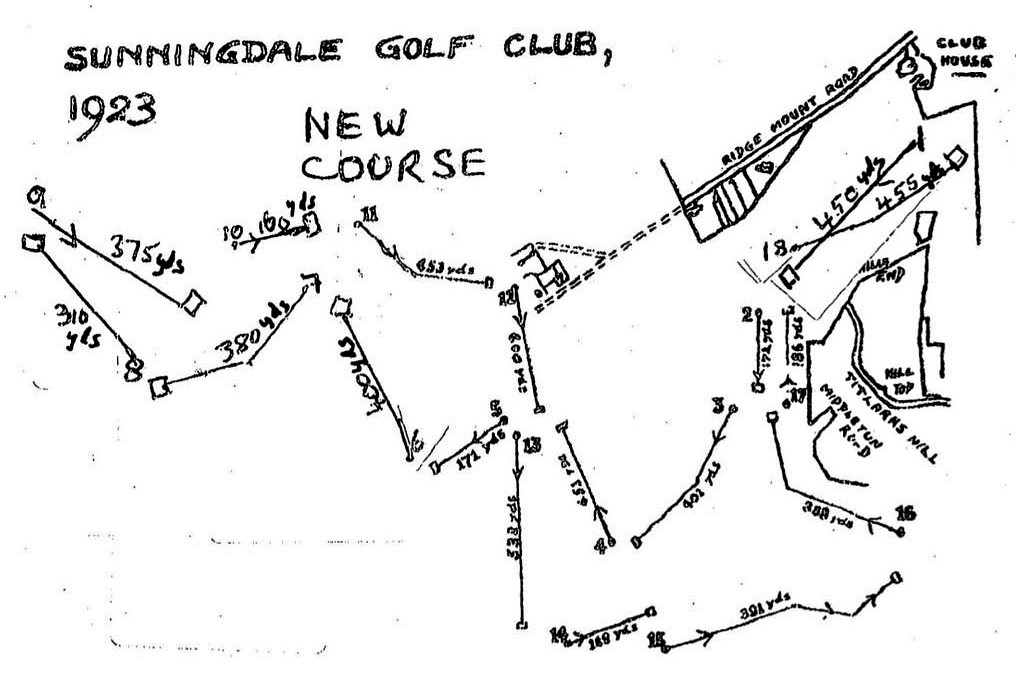
Opened in 1922 to a Harry Colt design on Chobham Common, the course was soon radically altered in 1934 by Tom Simpson, though the original Colt routing was kept in play due to forceful membership interjection. Holes 2-5 and 11-17 are original Colt holes even if not exact to original specification. Colt's 6-10 saw the biggest change as these holes were all but abandoned and the old 6th with a new green became the 9th. The 10th too had its tee moved at a right angle to play adjacent to the hill rather than down it. It is said the original Colt 6-10 were very good holes, but perhaps a bit too hilly, hence the reason for Simpson's work. Tom Simpson's redesign was not well received. Five years later Colt was called back with J Morrison in tow to sort The New Course out and this is essentially the course we play today with a few changes here and there. Some years back the club cleared trees to offer a glimpse of the original Colt holes, but the hoped progress toward rebuilding these holes never materialized.
The last time I played the New tree clearing particularly around 15-16 and to the right of 6 was astonishing. I thought far more clearance was going to take place, but it seems this is a slow process...the course could certainly benefit from more clearance. The New isn't a course that can be easily labelled, perhaps because it has been chopped up on a few occassions and the flow isn't as smooth as the Old. However, the variety of terrain, bunker schemes, greens (though they all tend toward the subtle side) & hole shapes are tremendous. Its all made more lovely by the odd interior views which are on offer. Especially impressive are the many greens which flow into fairways, often creating a bit of a false front. The course plays fairly long and a few par 4s require two solid shots to get home from the forward tees. Only 3, 8 & 16 can play relatively short if one is successful with an aggressive drive as all three holes dogleg severely right, as it happens.
The opener is a difficult 400ish yard introduction to the course. A new bunker on the left has tightened the hole a bit, but it does require a very good tee shot to reach the sand.
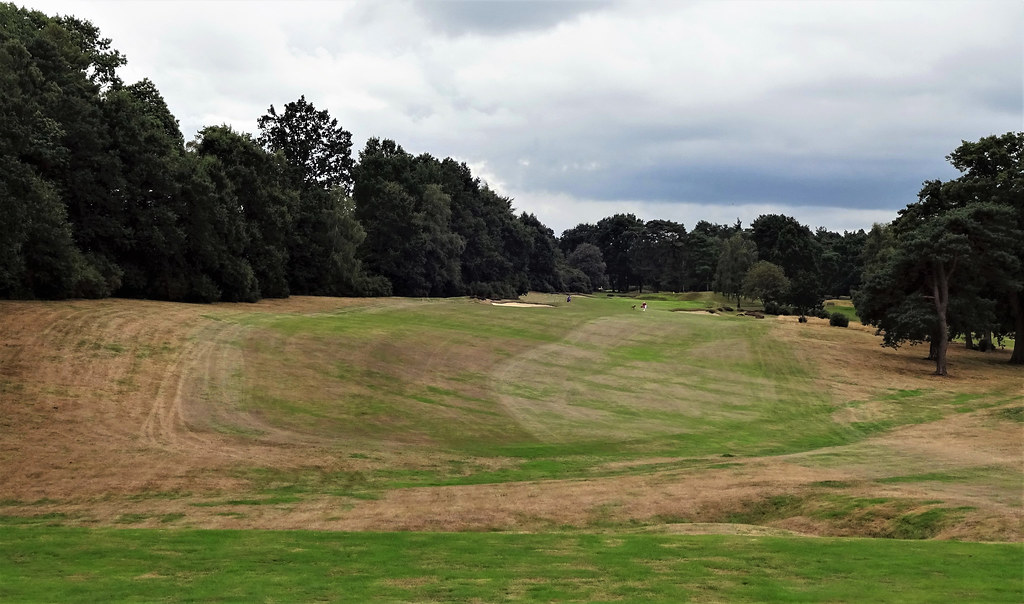
Behind the green.
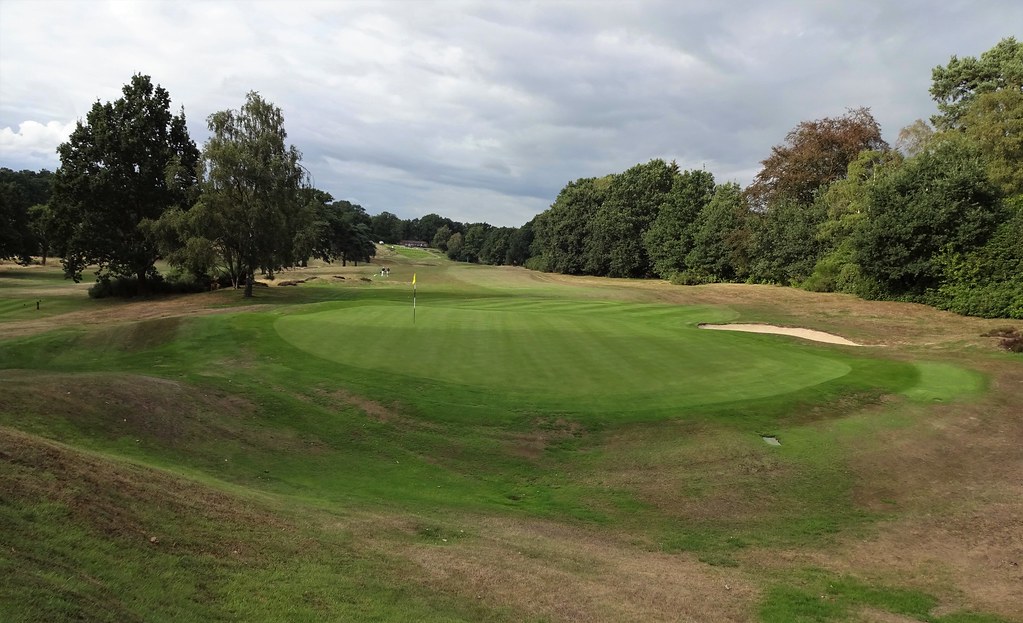
The one-shot 2nd continues uphill play.
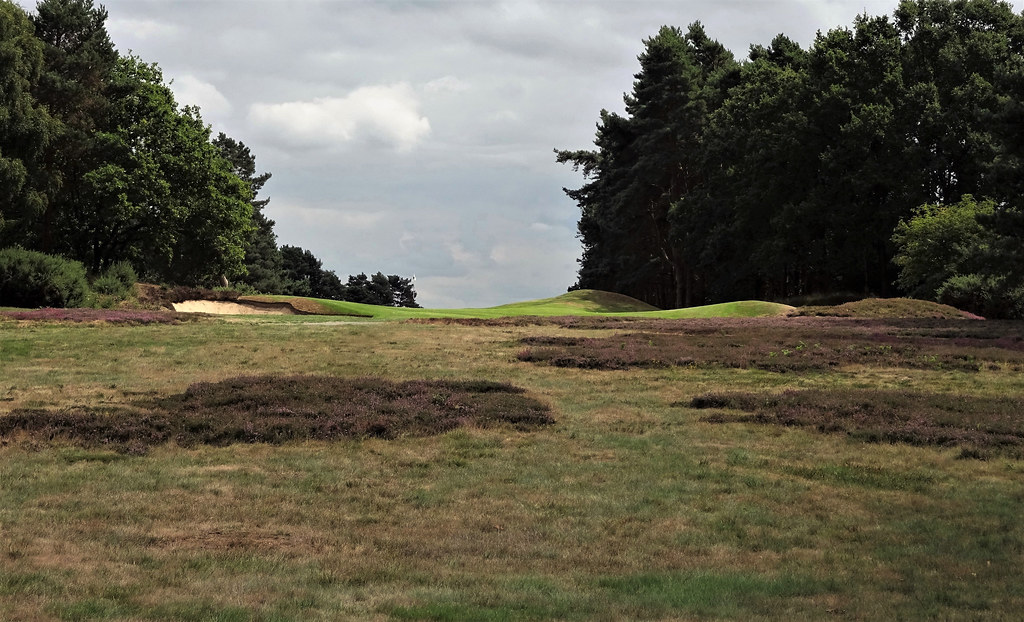
Trademark Colt knobs are clearly on display.
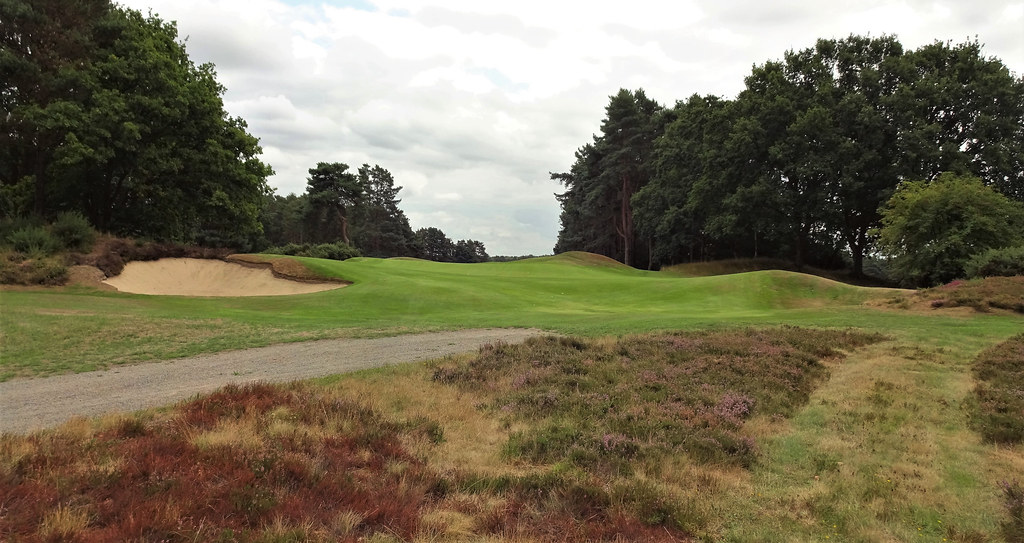
A shortish legger right, the third is one of those holes which begs the golfer to take the risky inside line. Heather is pleasurable to the eye, but damaging to the scorecard.
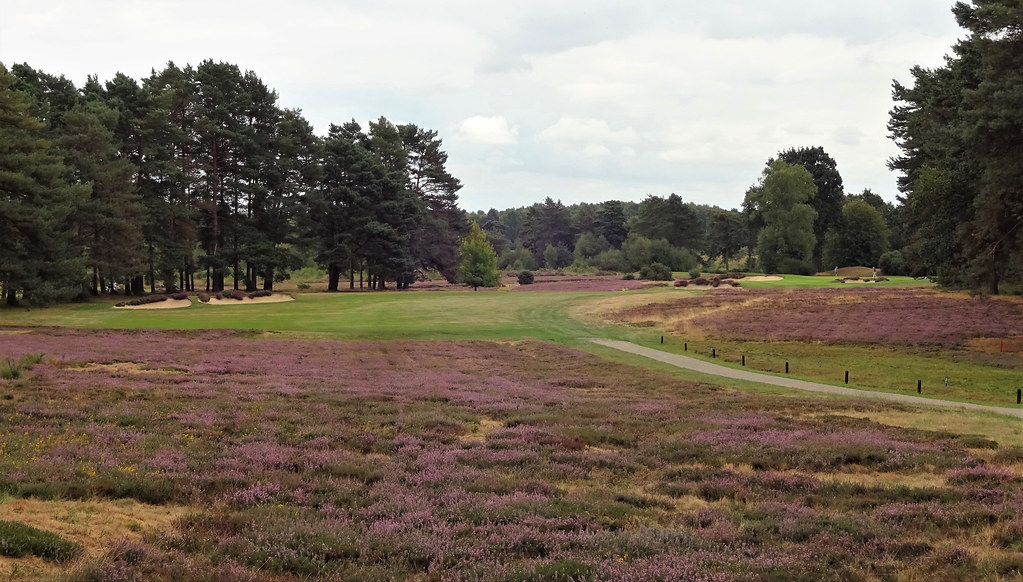
One of the great three hole stretches in England commences with the 4th, another long two-shotter. The heather is used to good effect in creating definition. Nothing but two straight and long shots will see the golfer putting.
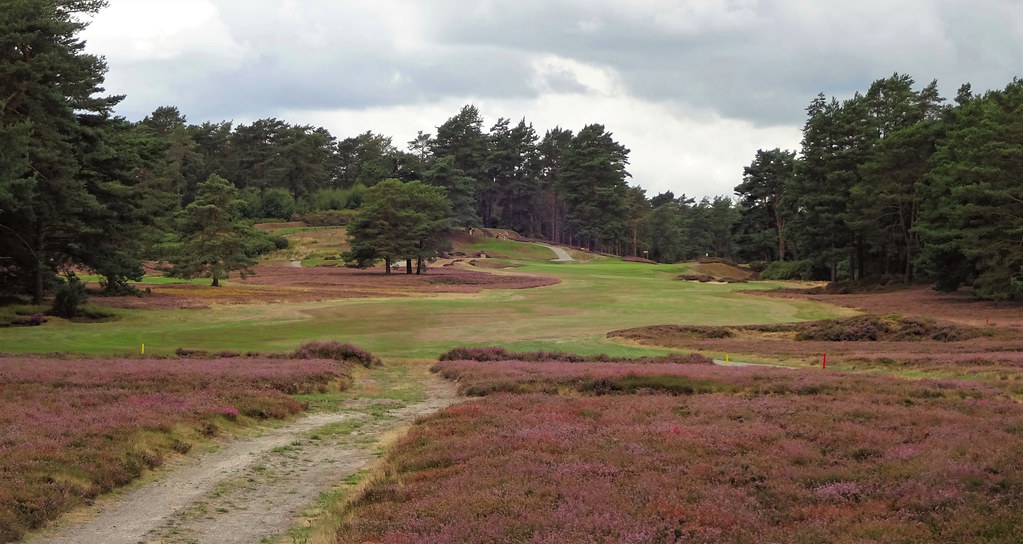
The approach.
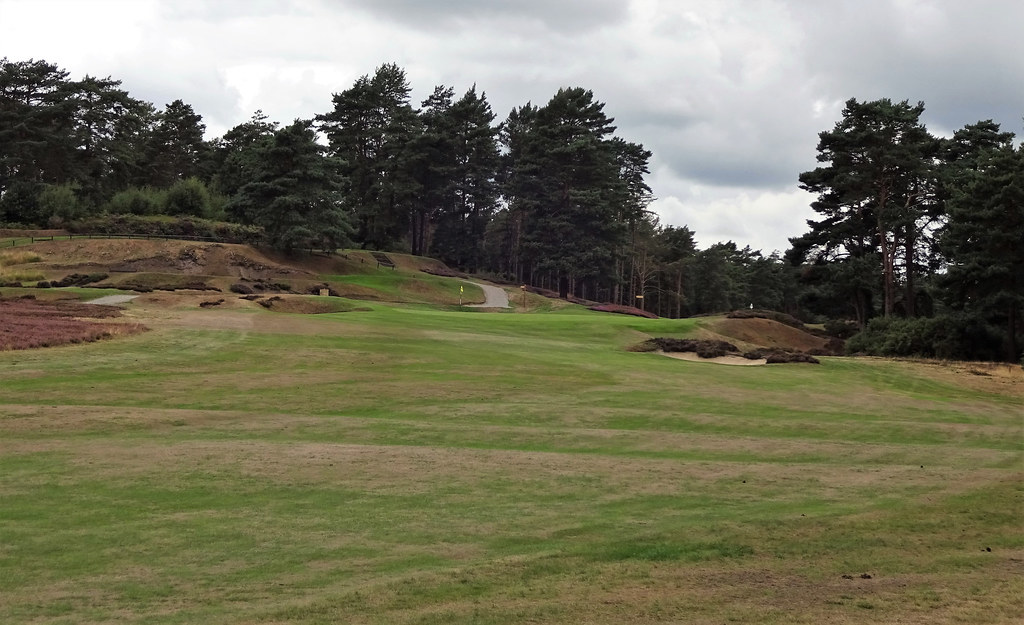
An expertly placed bunker which must see a reasonable amount of action. The green was moved to the lower right by Simpson then shifted back atop the plateau by Colt & Morrison.
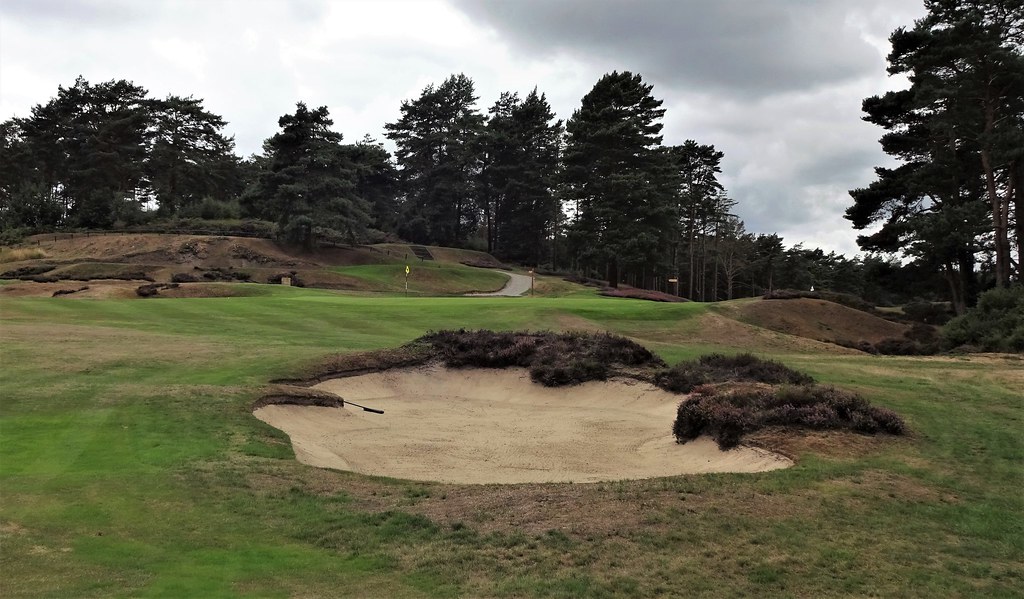
Below is a look at how the hole originally looked...miles wider than today and barely a tree in sight. Patric Dickinson remarked that Sunny New is a brawny, athletic course. It is clear that the meaning of difficult has altered somewhat over the intervening 65 years. It is only now that courses are being built which replicate the width seen in this photo and there seems to be a backlash against such seeming excess. Leaning toward what Colt believed was appropriate width seems a sensible stance to take in any such discussions.

Behind the green today.

The 170ish yard 5th is another lovely hole with what should be a world famous bunker to carry. In the old days this must have been a daunting tee shot. For anyone that has played St George’s Hill the 5th will look familiar as it shares many similarities with the famous 8th at SGH.
H Rountree 1931 painting.

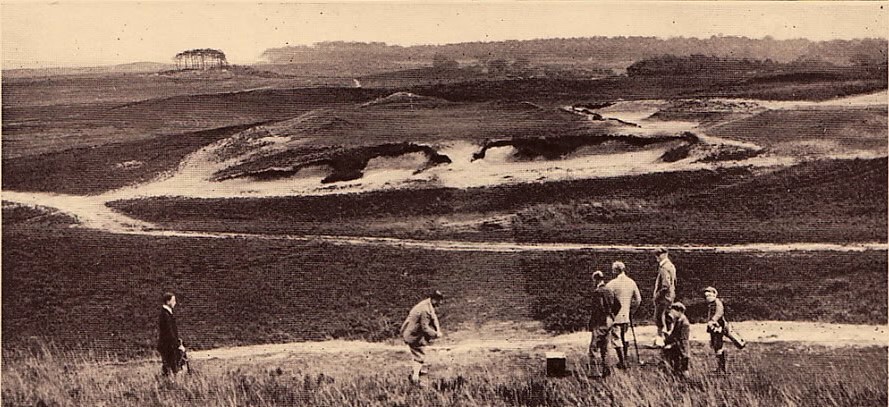
While still a fantastic hole, what exists today pales in comparison.
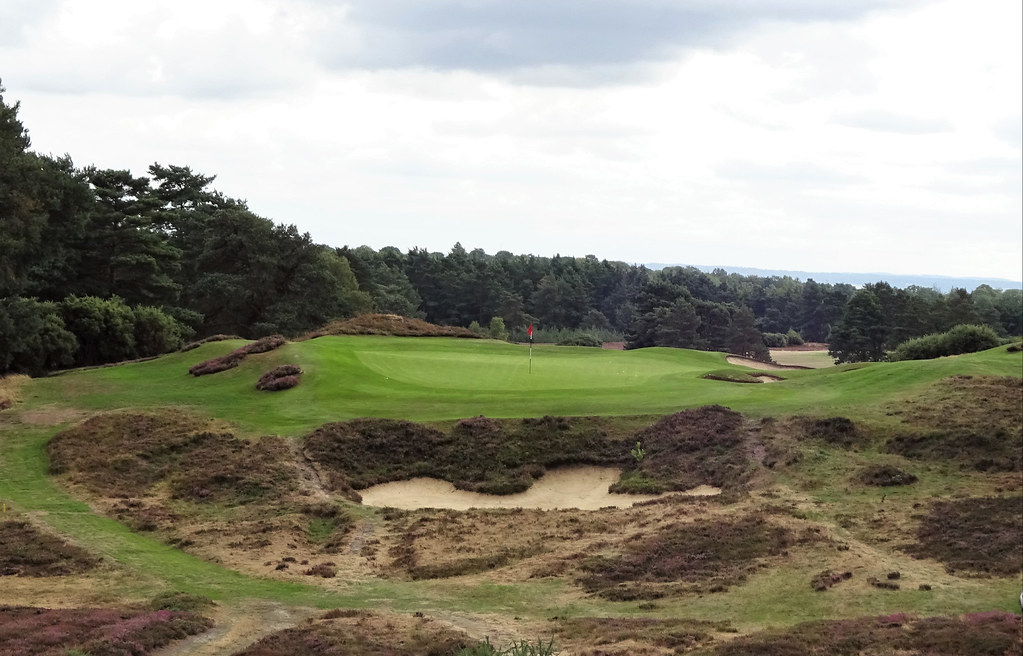
The valley is quite deep!
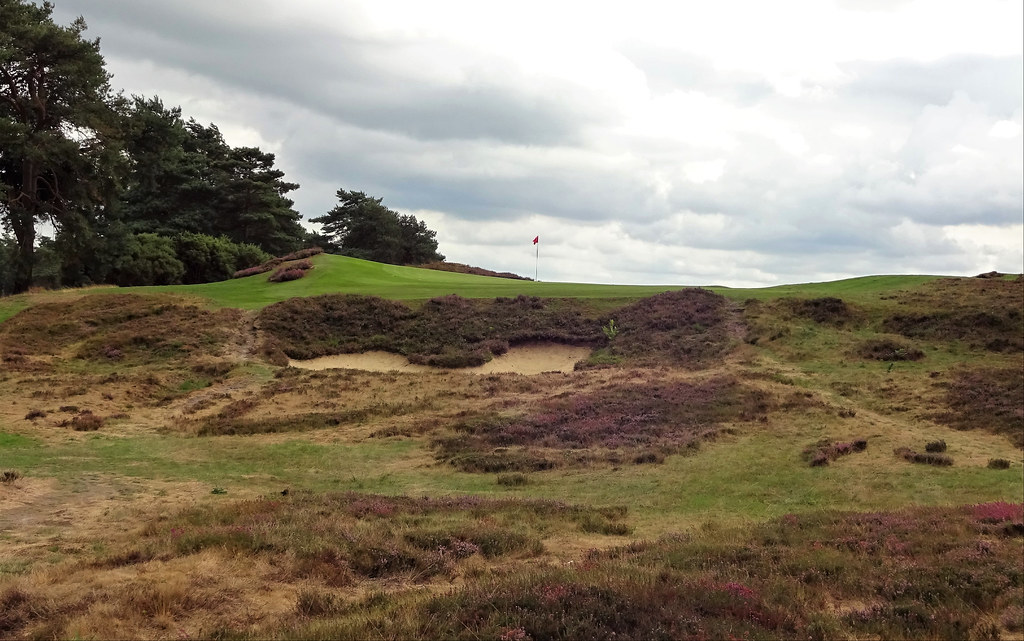
At this point the current course alters radically from the Colt original. The old holes essentially worked from the 6th tees (using the current 9th fairway) to the 10th green. The new holes go the opposite direction, then swing back toward the 10th. The few photos I have seen of the old holes makes me wonder what could be...Perhaps the best par 5 in the heathlands, the 6th is a tremendous risk/reward par 5. I believe the second half of the hole, especially the green, is one of the few Simpson alterations which survives though I have to wonder if that green is Simpson's. A good drive offers an opportunity to reach in two, but a miss right or left can easily result in a kiss on the card.

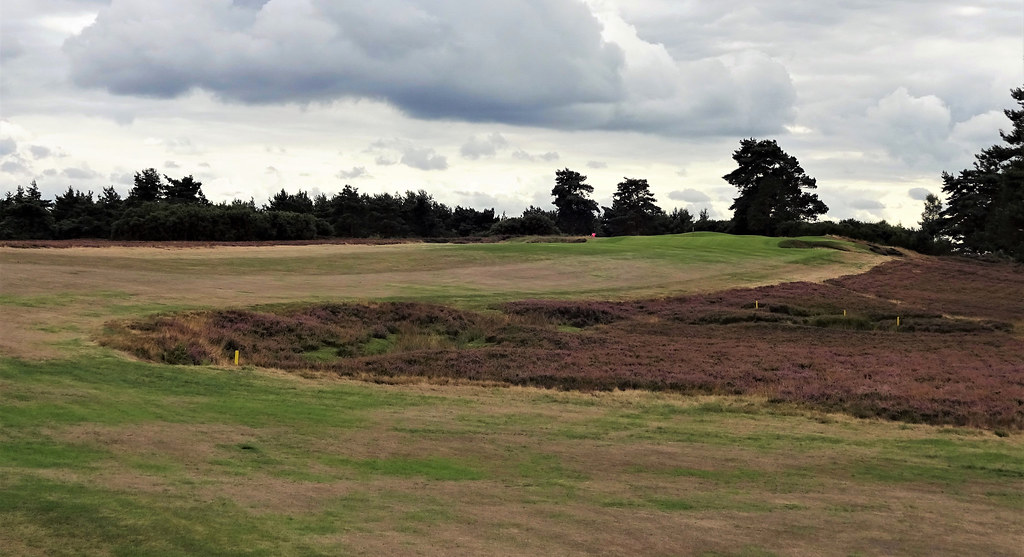
A brilliant hazard left of the green offering
some hope for the wayward approach.
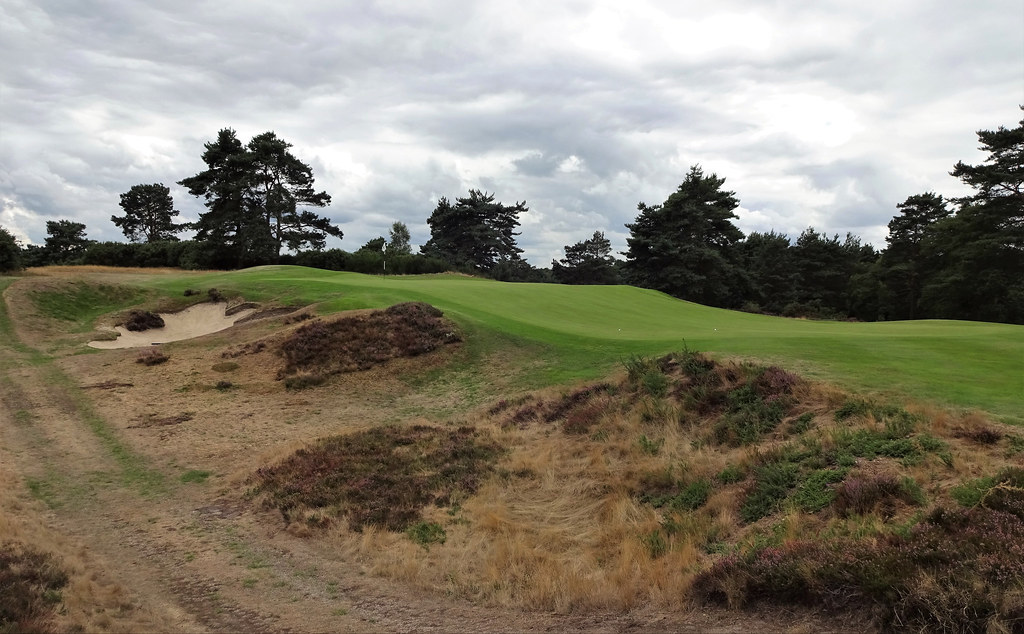
NLE 8th green.
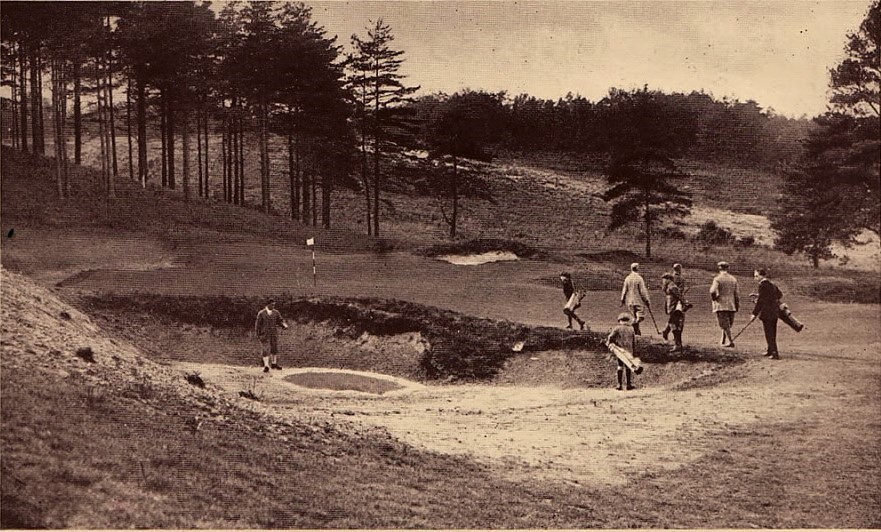
NLE 9th.
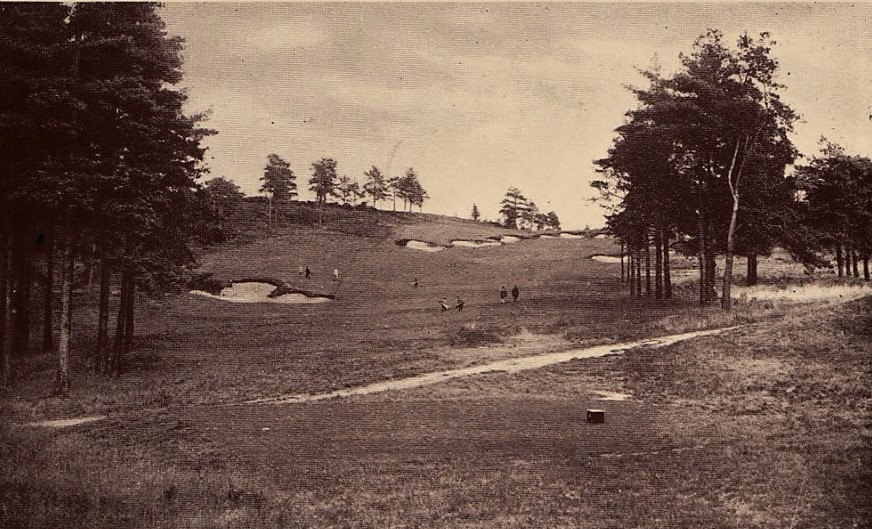
The 10th from the original tee at a right angle to the current tee to the right below the ridge.
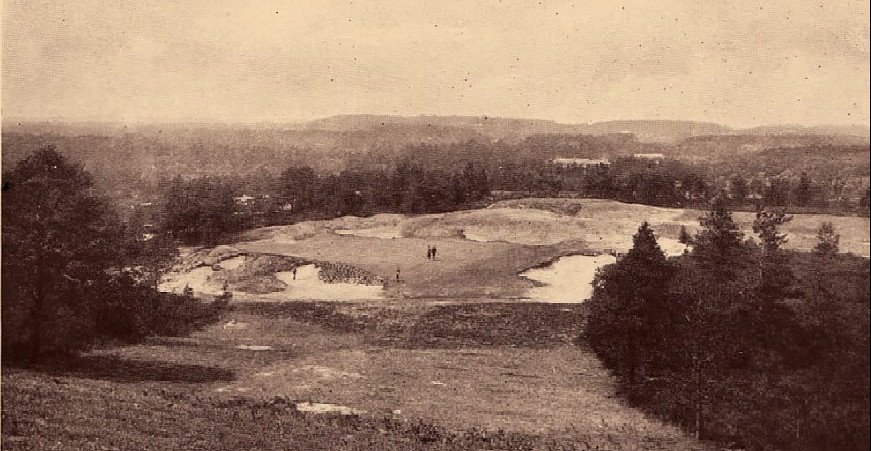
The current 7th is a shortish downhill par 4. I think the flip wedge approach is more complicated than it would seem. The green is almost semi crowned from the left as it falls away. The 8th and 9th are somewhat similar with blind drives over the crest of a hill.
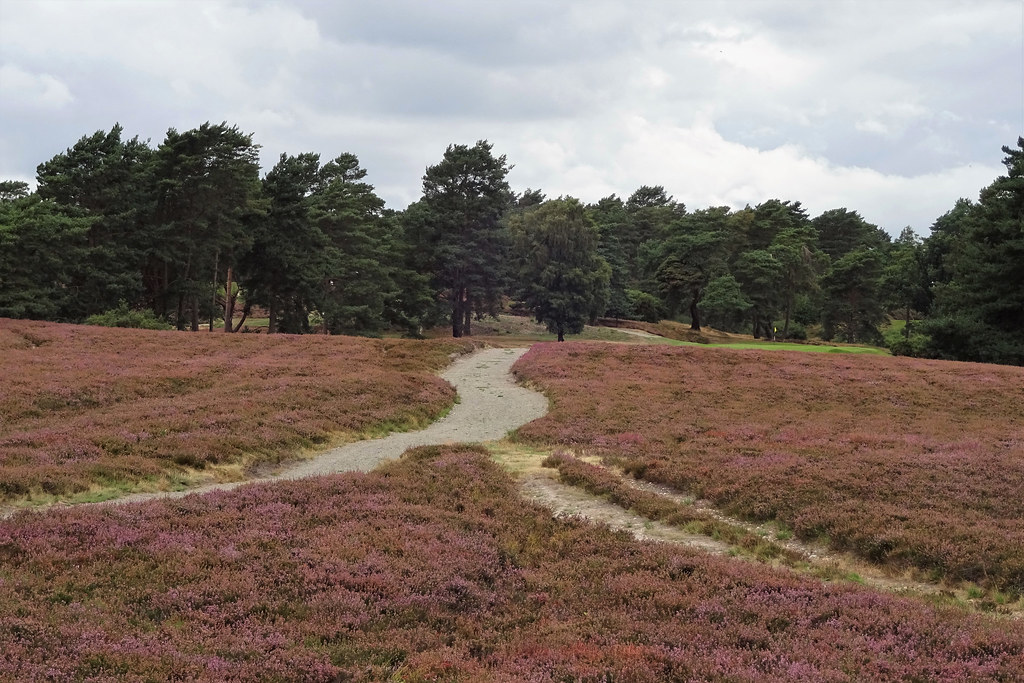
While the 8th is bunkerless, a rather harsh penalty of the dreaded gorse awaits the slightly leaked right approach, although a horrible forward tree was removed. I don't know the evolution of this green, but it doesn't strike me as something Colt would design.
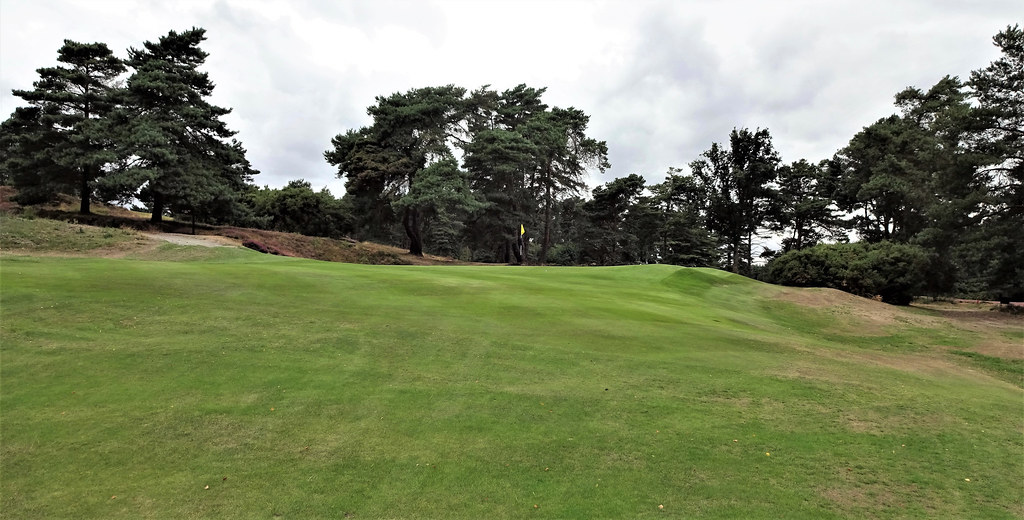
A third ball buster par 4 on the front nine, the 9th is another long par 4 over seemingly acres of heather. The New is not a course for those who can't consistently carry the ball about 150 yards!
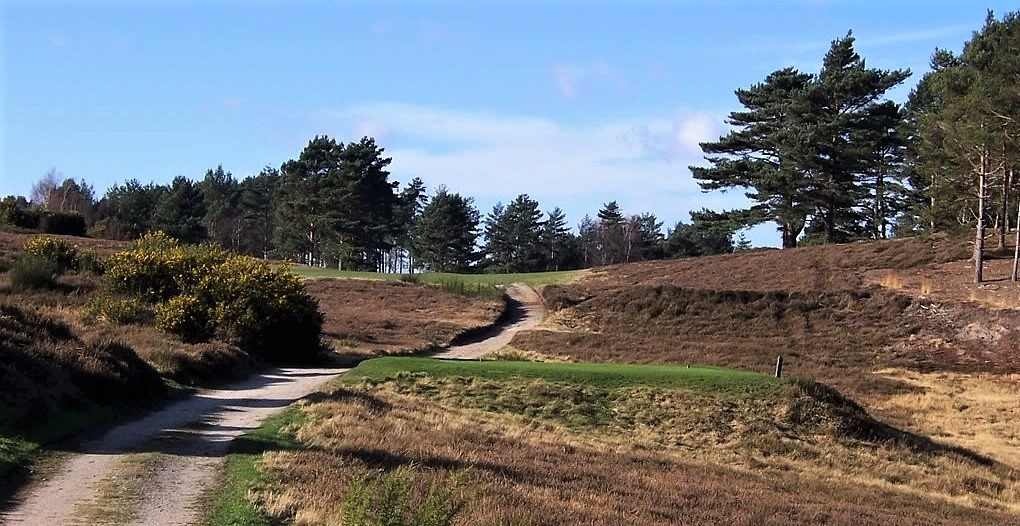
The 10th is a lovely par 3, though the angle of the tee is awkward in relation to the bunkering scheme. The gap between the bunkers opens toward the old tee up the hill on the left.
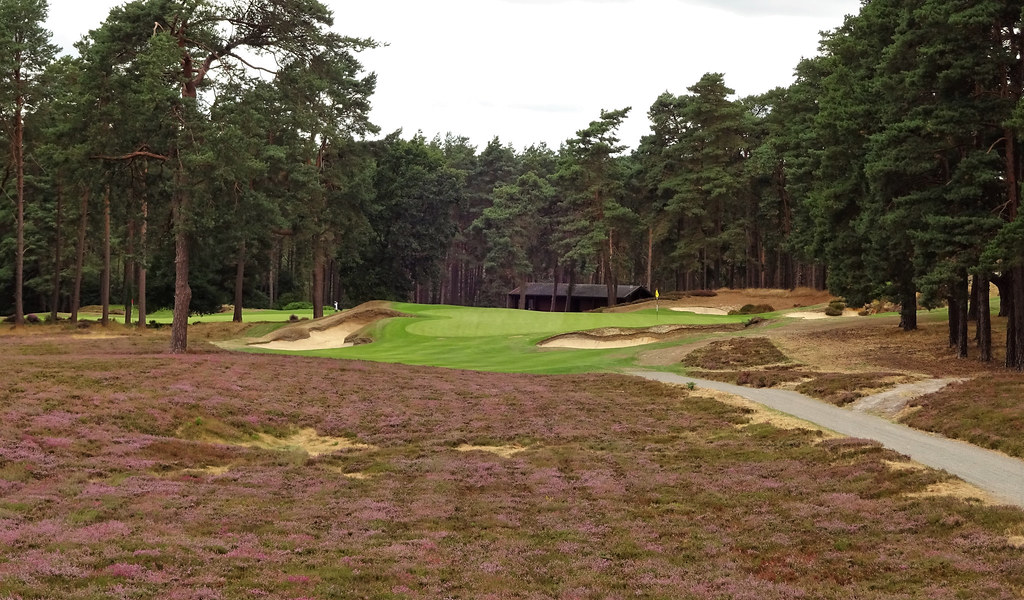

The remaining 8 holes aren't of the same quality as the opening 10. Though there are some highlights such as #s 12 & 14. Getting back to the 11th, the drive is obscured and swings hard left. However, it is the shaping right and forward of the green which sets this hole apart.
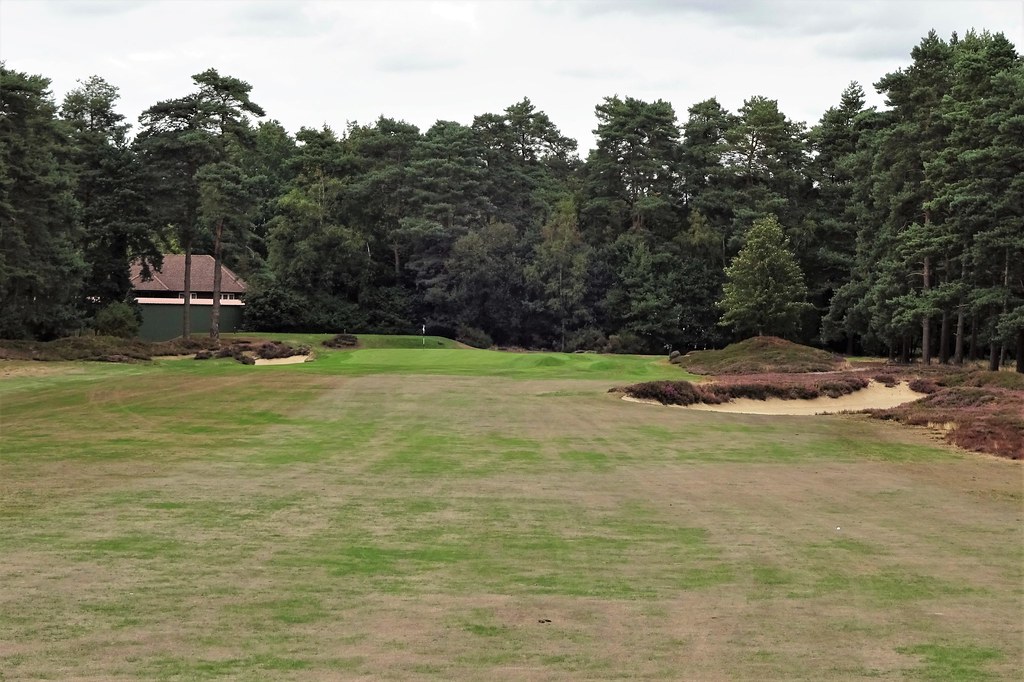

Snaking uphill, the 12th is one of Sunningdale's best two-shotters. The fairway bunker on the right reminds me of Walton Heath. The greensite for the 12th is benched between high and low ground. I am told that Simpson moved the green left of its current and original position. I think the powers that be were right to shift the green back to higher ground.
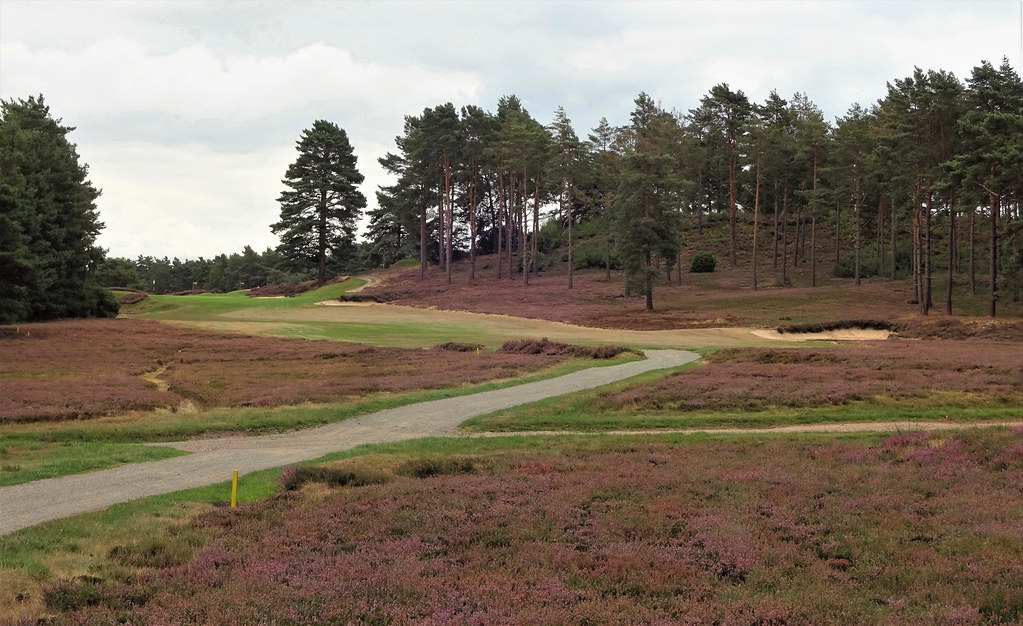

A fairly long par 5, the 13th is actually some 40 yards shorter than the original hole. However, this hole doesn't do much to move my needle. Which brings us to the spectacular 14th; the short hole Darwin thought was the best among a very accomplished set of short holes.
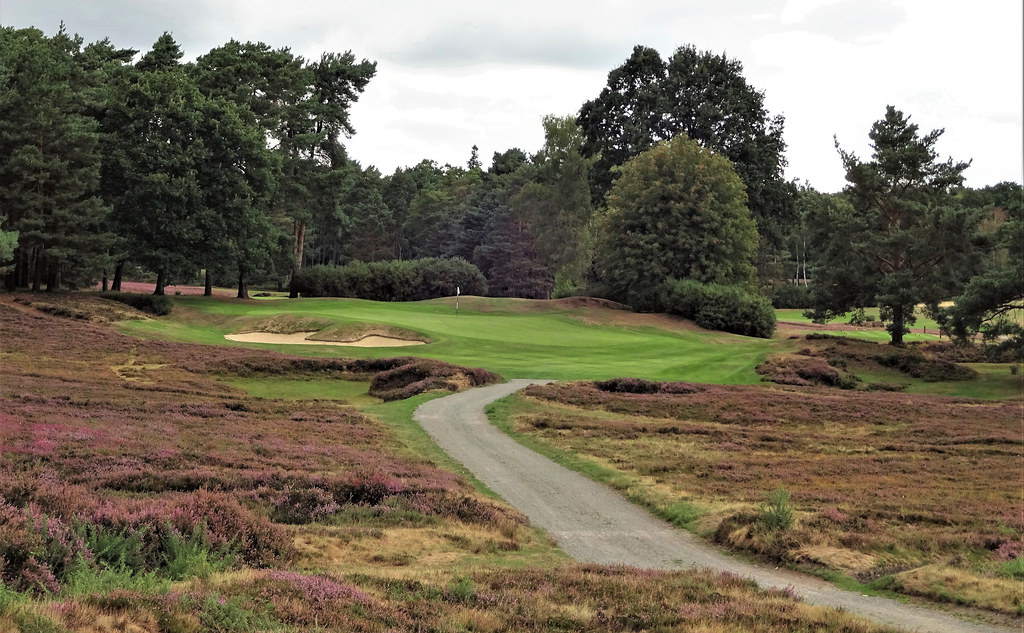
There is evidence here and there of filled in bunkers, but this hole has a handful of pits which have lost their sand. Looking critically at the greensite, it could do with a complete removal of vegetation save for perhaps the right tree. The design is quite similar to Moortown's famous Gibraltar, yet its visual impact is greatly dampened.
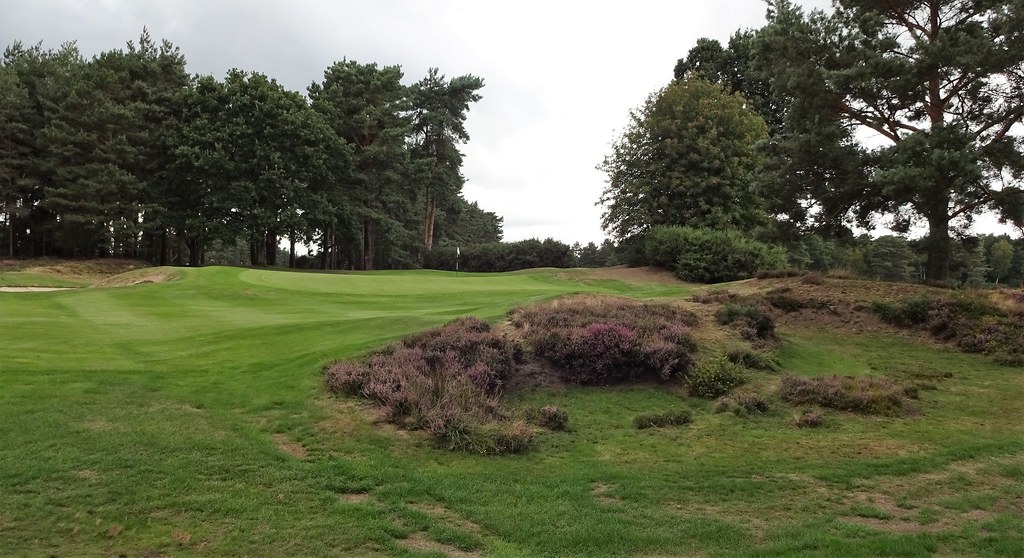
Swinging right over the rather odd pond and up the hill, the 15th fairway leaves a fair amount of space left to maneuver around the water. I suspect the ditch used to continue up the hill prior to the pond being built. It is difficult to figure out the yardage to the flag because of the uphill nature of the approach and the manner in which the green bleeds into the fairway. The theme of obscured drives continues with the 16th, a legger right around OOB. The difficulty of the 17th has never been in doubt, but it used to be the least interesting of New's short holes. Recent vegetation clearing and bunker work has made the hole far more appealing.

The three-shot home hole is less than satisfactory. With trees rather than heather crowding the fairway it is a bit jarring on the eye. The uphill approach, however, is very good. Hawtree's fairly recent work surrounding the green is excellent.
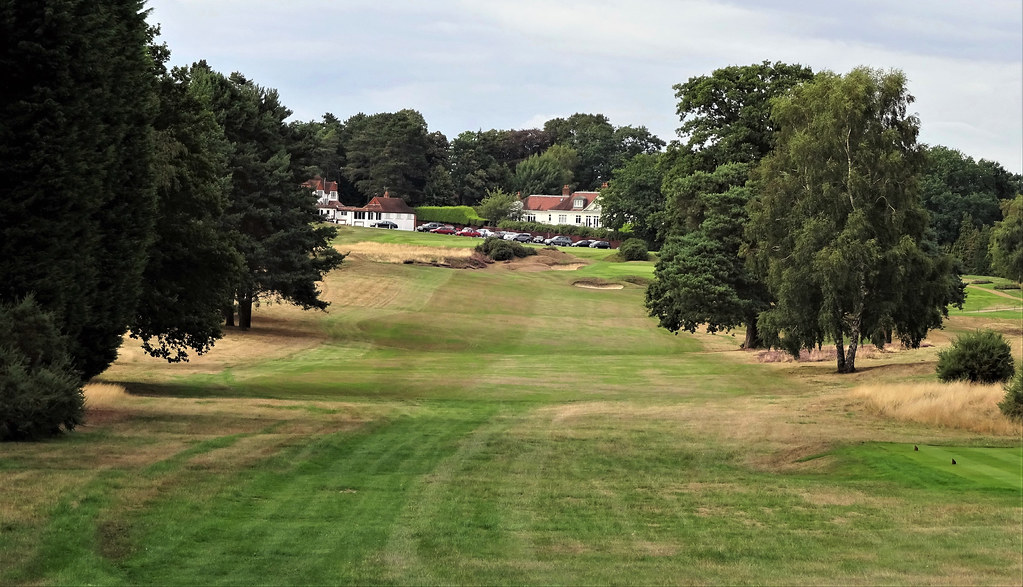
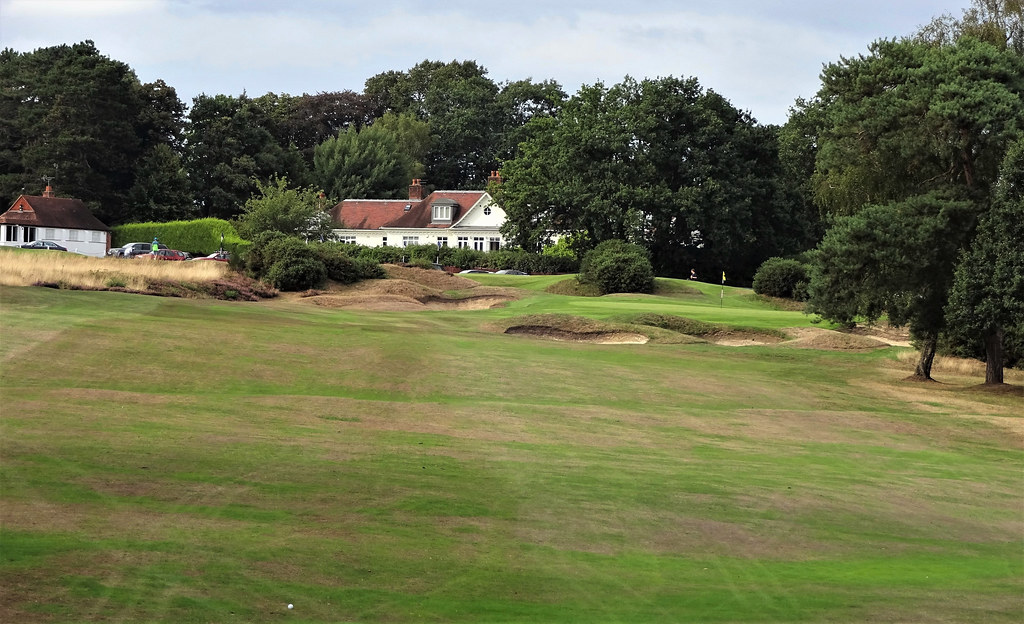
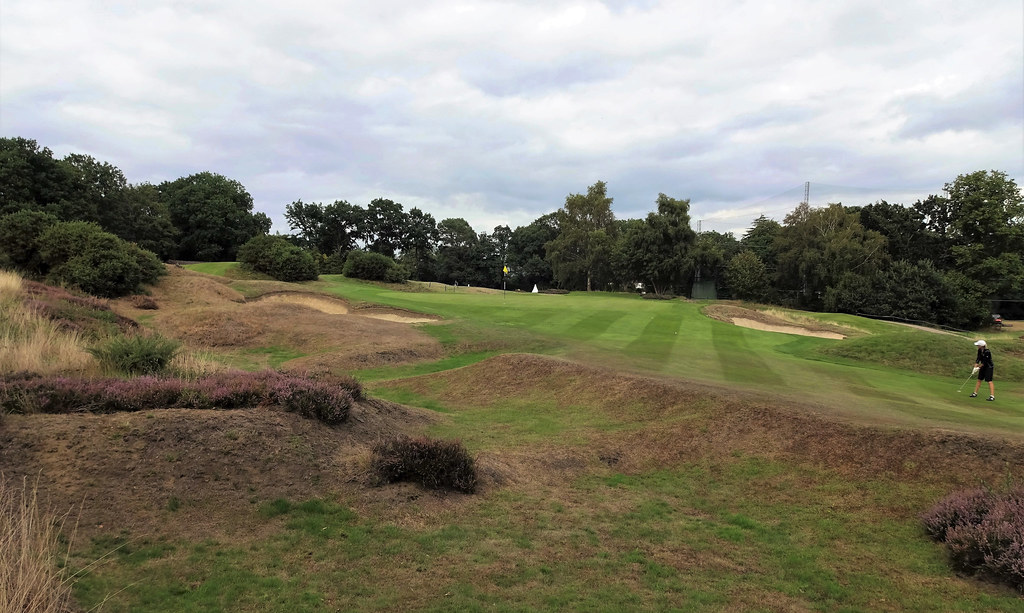
I must say the the New impresses me despite less than stellar closing holes. Without question, the par 3s set the course up as something special, but the All-England candidate 6th must be considered the best hole among a bevy of longish par 4s and 5s. The question of which is better, the Old or the New always comes up. All I will say is that it would be a mistake to skip the New because of its "second course" stature. It has all the attributes of a proper course in its own right and should on no account be taken lightly. 1* 2018
Old Course
www.golfclubatlas.com/forum/index.php/topic,53335.msg1225962.html#msg1225962Ran's Review
http://golfclubatlas.com/courses-by-country/england/sunningdale-new/sunningdale-new-pg-ii/Thanks must go to P Turner for scanning the old photos.
Ciao